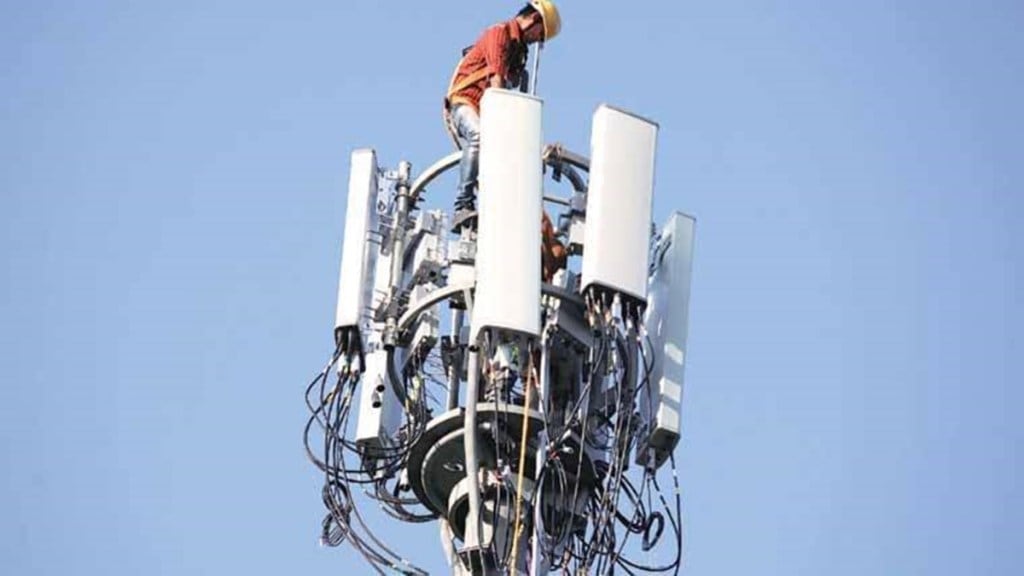A muted subscriber growth, delay in headline tariff hikes, slowdown in switch from 2G to 4G, and lesser number of days are expected to limit the revenue growth of telecom companies in the January-March quarter, analysts have said.
According to them, the subscriber base growth has been restricted owing to higher smartphone prices and some SIM card consolidation and churn, especially in the lower segment subscribers, which is also expected to have restricted the overall growth of telecom operators.
Also read: Gas from legacy fields cheaper by a quarter
In the January-March quarter, the telcos are expected to report a 1.2% quarter-on-quarter (q-o-q) growth in revenues collectively, according to average estimates of five brokerage houses. This is lower than the 1.8% growth they posted in the October-December quarter.
The reason for weak revenue growth is also because Vodafone Idea’s revenues may see a drop during the quarter, according to analysts. Besides, Airtel and Jio are expected to see a 2% growth in revenues, according to average estimates.
A slight growth in revenue for Airtel can be attributed to the hike in base-level tariffs, increase in data consumption, growth in the enterprise business, and additions of 4G subscribers. For Jio, data consumption and better addition of subscribers compared with its rivals are expected to have contributed to revenue growth.
With regards to bottomline, Vodafone Idea will likely see an expansion in losses to Rs 8,104 crore from Rs 7,990 crore in the October-December quarter, according to the average estimates of four brokerage houses. Airtel is expected to see a 44-45% q-o-q increase in net profit at Rs 2,008 crore at a consolidated level. Jio Platform’s net profit is expected to be flattish at Rs 4,900 crore, according to estimates from ICICI Securities.
According to ICICI Securities, Bharti Airtel’s consolidated profit is seen higher owing to growth in its joint ventures like Indus Towers and other subsidiaries, whereas for Reliance Jio, higher depreciation and amortisation costs could weigh on the net profit.
Further, the operating profit or Ebitda of telecom companies is also expected to moderate in the quarter, as the impact of lower spectrum usage charge (SUC) has been fully accounted for in the previous two quarters, according to analysts. Operating margins are calculated on earnings before interest, taxes, depreciation and amortisation (Ebitda).
“With the benefit of reduced spectrum usage charges already realised over 2QFY23 and 3QFY23, we expect Ebitda growth to moderate to 1% q-o-q in 4QFY23 with flattish margins on higher SG&A (selling, general and administrative expenses), and network costs,” brokerage house BNP Paribas said.
Margins of telcos would also be impacted by the rollout of 5G which is likely to increase network expense, according to analysts.
Also read: Pre-sanctioned credit lines to come under UPI ambit
“Capex numbers could be lumpy in 4Q as Bharti continues to front-load its 5G investment & catch-up with Jio,” BofA Securities said.
SUC, which earlier was 3-3.5% of AGR (adjusted gross revenue), will not be applicable on purchasing 5G spectrum and other spectrum purchases, going forward. The full benefit of SUC was reflected in the October-December quarter, according to analysts.
On the operating metrics, the overall subscriber growth is expected to be muted. “Subscriber addition trend for Bharti Airtel is likely to moderate vs last quarter, with an addition of 2.5 million. Data subscriber addition is likely to come in at 4.7 million,” Emkay Global said in a report.
“Bharti may report subscriber rise of 2 million (+0.6% q-o-q), while Vodafone Idea’s subscriber base may fall by 4 million (-1.7%). RJio’s net subscriber addition will likely be 6 million (+1.4%). We estimate Arpu growth to be flattish at 1% q-o-q as Q4FY23E had two less days,” ICICI Securities said in a note.
In the October-December quarter, Bharti Airtel’s mobile subscriber base was at 332 million, while that of Jio and Vodafone Idea were at 433 million and 229 million, respectively.
Lately, subscriber base growth has been muted owing to inflation. Further, the feature-to-smartphone upgrade has been slower due to higher prices of the latter. Analysts, however, believe growth in data usage with increase in 5G penetration will continue to drive Arpus for telcos in the absence of tariff hikes.
Bharti Airtel’s Arpu is seen at Rs 195.5, an increase of 1.3% from Rs 193 in the preceding quarter, whereas Jio’s is expected to increase marginally to Rs 179, and that of Vodafone Idea will likely rise by 1.5% q-o-q to Rs 137.
In the March quarter, the industry’s data volume is expected to grow 3-4% q-o-q to nearly 50 trillion MB, which is higher than the 2.5% growth in the preceding quarter.
On the other hand, growth in voice consumption on the telcos’ network will be weak compared with the previous quarter owing to factors like growing communication over OTT apps.
When the companies start reporting their earnings later this month, investors will keep a close eye on their guidance on the next leg of tariff hikes, capital expenditure, and plans on the postpaid segment, among other things.
“4Q results could turn largely a non-event from stock perspective. Commentary on capex and any clarity on potential tariff hikes (or lack of it) would likely act as a catalyst for the stocks,” BofA Securities said.


